Abstract
Background: Acalypha godseffiana is an important plant used as an ornamental and herbs; its leaves are used in the management of diseases like diabetes in Eastern Nigeria.
Aim: The study aims at linking the hypoglycemic activity extracts of leaves of A. godseffiana to their polyphenolic contents.
Setting: Fresh leaves of A. godseffiana were obtainedfrom Imo State, Nigeria, identified in University of Lagos Herbarium, air-dried, pulverized and kept for investigations.
Method: The phytochemical compositions and antioxidant potentials of acetone, aqueous, ethanol and methanol extracts of A. godseffiana were determined using adopted methods. An in-vitro approach was used to evaluate the hypoglycemic potentials of the extracts on α-amylase and α-glucosidase enzymes. The mechanism of inhibitions was studied using the Lineweaver-Burk plot.
Results: Antioxidant results revealed that total antioxidant capacity of the acetone extract (IC50: 0.34 mg/mL) showed better activity compared to the standards (silymarin 0.52 mg/mL; gallic acid 0.51 mg/mL). Thehypoglycemic findings confirmed that acetone extract demonstrated strong and mild inhibitory potential against α-amylase and α-glucosidase respectively, showing concentration dependent with IC50 values of 2.33 mg/mL and 0.13 mg/mL. The observed hypoglycemic and antioxidant potentials of acetone extract of A. godseffiana correlate to its high polyphenolic contents which include phenols (133.20 mg gallic acid g-1), flavonoid (350.60 mg quercetin g-1) and tannins (264.67 mg catechin g-1). The mechanisms of action exhibited by the acetone extractwere uncompetitive and mixed non-competitive which can be attributed to its inhibitory properties on α-glucosidase and α-amylase respectively.
Conclusion: The results obtained from this study validate the acetone leaves extract of A. godseffiana as potential agent in management of sugar related disorder.
Introduction
Non-communicable diseases such as diabetes mellitus (DM) are among the five leading causes of death in the world (Joseph & Jini 2011). In sub-Saharan regions of Africa, such as Nigeria and South Africa, it was reported by World Health Organization that the burden of diabetic epidemic of all age groups in Africa was approximately 7.1 million at the end of 2000, and is estimated to increase to 18.6 million (Shaw, Sicree & Zimmet 2010) by 2030. Worst still, Nigeria and South Africa are at Africa were reported to be at higher risk countries in Africa, with an incidence rate of 4.50% and 8.30%, respectively (Abdullah et al. 2014). Diabetes mellitus is a chronic metabolic disease characterised by high blood sugar resulting from the inability of the body to produce insulin or utilise the insulin produced, or both. This metabolic disease is initiated by either the failure of the cells to utilise the produced insulin or the incapability of the pancreas to produce enough insulin, or both (Gardner & Greenspan 2011). The defective responsiveness of body tissues to DM is categorised into three major types: type 1 DM, type 2 DM and gestational diabetes. Type 1 DM (also known as insulin-dependent DM) is caused by autoimmune destruction of the pancreatic beta cells, leading to loss or insufficient production of insulin; it is prevalent among juveniles. Type 2 DM (also known as adult onset DM) is caused by the inability of the cells to utilise insulin properly. Gestational diabetes occurs during pregnancy because of high blood glucose level as a result of the inability of the system to produce enough insulin for cells (Maori, Ezekiel & Bilal 2012). The DM pandemic is associated with unhealthy life style, civilisation, ageing and effects of reactive oxygen species (ROS) (Wild et al. 2004). If uncontrolled, it results in serious long-term complications such as cardiovascular disease, stroke, chronic kidney failure, foot ulcers and damage to the eyes, which eventually cause death of sufferers (Levitt 2008). Recent evidence suggests that besides obesity and physical inactivity known to be major risk factors for type 2 diabetes (T2DM), oxidative stress may contribute to the pathogenesis of T2DM by increasing insulin resistance or impairing insulin secretion (Montonen et al. 2004). The advancement of diabetes and its hitches are worsened by oxidative stress by generation of highly reactive free radicals mainly as a result of hyperglycaemia. Besides, excess generation and/or insufficient removal of these free radicals leads to vascular dysfunction and damage to cellular proteins, membrane lipids and nucleic acids (Johansen et al. 2005). The ability to inhibit the formation of ROS or scavenge free radicals via antioxidants is a therapeutic strategy to prevent oxidative stress and the related diabetic vascular complications (Bajaj & Khan 2012). Plant polyphenols such as phenols, phenolic acids and flavonoids (Zhou & Ibrahim 2010) have been reported as potential and viable source of antioxidants. Acalypha godseffiana (Euphorbiaceae family) belongs to the genus Acalypha, comprising about 570 species (Ogundaini 2005). It is commonly called copperleaf, Joseph’s coat, fire dragon and match-me-if-you-can (Ikewuchi et al. 2011). It originated in Pacific Island, a fast-growing bushy shrub, an ever-green plant with green leaf blade and creamy-white margins. The young developing leaf has pinkish tinge. In traditional medicine, the roots are used as cathartic and leaves are reported to have laxative and vulnerary properties (Sahoo et al. 2014). The expressed juice or boiled decoction of the leaves of A. godseffiana has been used in traditional health care practice in Eastern Nigeria, for the management of gastrointestinal disorders, fungal skin infections, hypertension and DM. The leaf of species of Acalypha has also been reported to possess antimicrobial (Akinyemi et al. 2005; Ogundaini 2005; Oladunmoye 2006), hypolipidaemic, hypoglycaemic (Quds et al. 2012), diuretic and anti-hypertensive (Seebaluck, Gurib-Fakim & Mahomoodally 2015) properties. In this study, the polyphenolic constituents, antioxidant and hypoglycaemic potentials of A. godseffiana leaves were investigated with respect to acetone, ethanol, methanol and aqueous extracts.
Materials and methods
Chemicals and reagents
The chemicals used in the study were the following: gallic acid, silymarin, quercetin, 1,1-diphenyl-2-picrylhydrazyl (DPPH), iron III chloride (FeCl3), potassium ferricyanide [KFe(CN)6], sodium hydroxide (NaOH), sodium nitrite (NaNO2), aluminium chloride (AlCl3), Folin and Ciocalteus’s phenol reagent, sodium carbonate (Na2CO3), 2,2’-Azino-bis(3-ethylbenzothiazoline-6-sulphonic acid) (ABTS.+), sodium persulphate solution (PPS), ammonium molybdate, sodium phosphate, ferocine, phosphate buffer trichloroacetic acid (TCA), thiobarbituric acid (TBA), hydrogen peroxide (H2O2) (Merck Chemical Supplies, Darmstadt, Germany) pancreatic α-amylase, α-glucosidase and p-nitrophenyl-α-D-glucopyranoside (pNPG) from Sigma Chemical Co. (St. Louis, MO, USA). Starch, dinitrosalicylic acid (DNS), maltose and sucrose were products of J. T. Baker Inc., Phillipsburg, NJ, USA, while acarbose was obtained from Bayer Medical Co. Leverkusen Germany. The additional reagents and solvents used in the study are of standard grades.
Collection, authentication and preparation of plant sample
The leaves of A. godseffiana were obtained from Imo State, Eastern Nigeria, from October to December 2015. The plant was authenticated (LUH 2753) and deposited at the herbarium, Department of Botany, Faculty of Science, University of Lagos, Akoka. The plants were air-dried for 5 days and pulverised to coarse powder. An amount of 100 g of the coarse sample was separately macerated with acetone, ethanol and methanol for 72 h and lukewarm distilled water with continuous agitation (to enhance extraction of metabolites) for 12 h. The solvent extracts were concentrated to dryness using rotary evaporator (BUCHI Rotavapor R-300, New Castle, Delaware, USA ) at 37 °C, while water extracts were freeze-dried (Lyo Lab 3000, Apollo Scientific CC, Port Elizabeth, South Africa). The extracts were kept at 4 °C until use.
Phytochemical analysis
Qualitative phytochemical analysis
The qualitative phytochemical components of the leaf extracts were determined using standard protocols (Harborne 1984; Trease & Evans 2002).
Analysis of total phenolic composition
Total phenol contents: The total phenol in the extracts was calculated using Folin and Ciocalteu’s phenol reagent (Adedapo et al. 2009; Nabavi et al. 2008). The volume of 2.5 mL of 10% Folin-Ciocalteu reagent (v/v) and 2 mL (75 g/L) Na2CO3 solution was added to a test tube containing the extract at different concentrations. The tubes were agitated for 15 s and let to stand at 40 °C for 30 min for the reaction to be completely observable with colour development. Absorbance was then measured at 760 nm using UV-Vis spectrophotometer (DU 7400, Beckman Coulter Inc, USA). Gallic acid was used as a standard and the total phenolic content of the samples was expressed as equivalent gallic acid (mg/g) using the calibration curve equation: Y = 13.417x + 0.1919, R2 = 0.9593 of gallic acid.
Total flavonoids determination: The method of Samarth et al. (2008) was employed to determine total flavonoids in the extracts. The sample at different concentrations in a test tube was added 2 mL distilled water and 0.15 mL of 5% of NaNO2 and allowed to stand at 25 °C for 5–6 min. A volume of 0.15 mL of 10% AlCl3 was added and allowed to stand for another 6 min, 1 mL of 4% NaOH was then added to the solution along with 5 mL of distilled water, vortexed for 15 min and colour change was observed. The spectrophotometer at 420 nm was used to obtain the absorbance. The flavonoids in the samples were calculated using quercetin (mg/g) as a standard using the following equation: Y = 1.755x + 0.0237, R2 = 0.977.
Total proanthocyanidins content: Determination of proanthocyanidin was done using the methods of Sun et al. (1998). A volume of 0.5 mL of 1 mg/mL of the extracts at different concentrations was added with 4% vanillin-methanol reagent (3 mL) and 1.5 mL hydrochloric acid; the solution was kept for 15 min on rest. The spectrophotometer at 500 nm was used to obtain the absorbance. The total proanthocyanidin in the extracts was calculated as catechin equivalents (mg/g) using the following equation: Y = 1.0733x + 0.0226, R² = 0.9956.
Determination of antioxidant activities
Scavenging activity using 1,1-diphenyl-2-picrylhydrazyl assay
The scavenging properties of the extracts on 1,1-diphenyl-2-picrylhydrazyl radical (DPPH) radicals were assessed by adopting the protocols described by Liyana-Pathiranan and Shahidi (2005). A volume of 1.0 mL of 0.135 mM DPPH in methanol was added to a test tube containing the extracts (0.125–0.1 mg/mL). The reaction mixture was shaken thoroughly and kept in dark for 30 min at 25 °C for colour change from purple to yellow. Then the degree of colour change of the solution was estimated at 517 nm using spectrophotometer. Silymarin and gallic acid were used as standard antioxidants. The ability to scavenge DPPH radical was calculated using Equation 1:
where A0 = absorption of blank sample and A1 = absorption of test extract solution.
Total antioxidant capacity by phosphomolybdenum method
The total antioxidant capacity (TAC) of the extracts was evaluated by the method adopted by Silici, Sagdic and Ekici (2010). The significant aspect of this assay is the ability of the extracts to reduce Mo (VI) to Mo (V) with the formation of a green phosphate/Mo (V) complex at acidic pH. A volume of 30 µL extracts of varying concentrations (0.125–0.1 mg/mL) was mixed with 300 µL of reagent solution (0.6 M sulphuric acid, 28 mM sodium phosphate and 4 mM ammonium molybdate) in 96-well plates. For the blank, 30 µL methanol was mixed with 300 µL of the reagent. Gallic acid and silymarin were used as control. The 96-well plates containing the mixture were kept in oven at 95 °C for 90 min, and the degree of reduction from Mo (VI) to Mo (V) of the extracts was obtained at 695 nm using microplate reader. The percentage inhibition of the extracts and standards was calculated using Equation 2:
where A0 = absorption of blank sample and A1 = absorption of test extract solution.
Ferric ion reducing antioxidant power assay
Ferric ion reducing antioxidant power (FRAP) of the extracts was determined using the method adopted by Müller, Fröhlich and Böhm (2011). Extracts at different concentrations (0.125–0.1 mg/mL) were mixed with 2.5 mL of 20 mM phosphate buffer and 2.5 mL potassium ferricyanide (1%, w/v KFe(CN)6), and the solution was then kept in an oven at 50°C for 30 min. A solution of 2.5 mL trichloroacetic acid (10% w/v) and 0.5 mL ferric chloride (0.1% w/v) was added to the mixture in 96-well plates and kept for 10 min. The ability of the extract to convert brown ferric ion (Fe3+) to blue ferrous ion (Fe2+) was measured at 700 nm using a spectrophotometer; gallic acid and silymarin were used as standard antioxidants. The percentage inhibition of the extracts and standards was calculated using Equation 3:

where A0 = absorption of blank sample and A1 = absorption of test extract solution.
Scavenging activity on 2,2’-Azino-bis (3-ethylbenzothiazoline-6-acid) radical
The 2,2’-Azino-bis (3-ethylbenzothiazoline-6-acid) (ABTS .+) scavenging activities of the extracts were assessed by the modified method proposed by Floegel et al. (2011). The stock solution of the ABTS.+ was prepared by dissolving 38.4 mg of 7 mM ABTS.+ in 10 cm3 of distilled water and 2.45 mM K2S2O8 (sodium persulphate solution) prepared by dissolving 6.623 mg K2S2O8 in 10 cm3 of distilled water. 2,2’-Azino-bis (3-ethylbenzothiazoline-6-sulfonic acid) and K2S2O8 were mixed in a 1:1 ratio and the mixture was kept in dark for 12 h. The stock solution of the ABTS.+ was diluted with methanol to an absorbance of 0.7 ± 0.005 at 734 nm to generate the ABTS reagent employed in this analysis, and methanol solvent was used as blank. A volume of 200 µL of the extract of varying concentrations (0.125–0.1 mg/mL) was added to the diluted ABTS˙+ solution (200 µL). The solution was vortexed and allowed to react for 7 min; absorbance was recorded at 734 nm using a 96-well microplate reader (BIORAD, Model 680, Japan). The mixture of methanol solvent and ABTS solution alone was used as control; gallic acid and silymarin were used as standard antioxidants (see Equation 4):
where A0 = absorption of blank sample and A1 = absorption of test extract solution.
The half-maximal inhibitory concentration (IC50) value was calculated from the linear regression equation using y = mx+ c, where y is the percentage activity and equals 50, m is the slope, c is the intercept and x is the IC50 value.
Antidiabetic assays: In vitro
Alpha glucosidase inhibition and kinetic methods
The inhibitory capacity of the extracts on α-glucosidase enzyme was evaluated using the protocol of Sabiu, O’Neill and Ashafa (2016). Distilled water was used for preparing 0.25–8.0 mg/mL concentrations of extracts of A. godseffiana and acarbose. To 96-well plates containing 50 mL of each concentration was added 0.1 M phosphate buffer of 1.0 M of α-glucosidase solution (100 mL, pH 6.9). The solution was kept in an oven at room temperature for 10 min. A volume of 50 mL of p-nitrophenyl-α-D-glucopyranoside (5 mM p-NPG) solution in phosphate buffer (0.1 M, pH 6.9) was added to each well at timed intervals. The solutions were kept in an oven at 25 °C for 5 min. The microplate reader (BIORAD, Model 680, Kumamoto, Japan) at 405 nm was used to measure the absorbance. The experiments were carried out in triplicate and the inhibitory activity of the extract was obtained as percentage inhibition using Equation 5:
where ∆A control and ∆A extract are the differences in absorbance of the control and extract, respectively. The inhibitory concentration (IC50) of the extracts’ enzyme activity was determined graphically.
Alpha-amylase inhibitory assay
The modified method of McCue and Shetty (2004) was adopted; 250 µL of sodium phosphate buffer (0.02 M, pH 6.9) containing a solution of α-amylase (0.5 mg/mL) was added to 250 µL of the extract in a test tube. The mixture was initially heated in an oven at 25 °C for 10 min, followed by an addition of 250 µL of starch solution (1%) in sodium phosphate buffer (0.02 M, pH 6.9) at a calculated time and heated again for another 10 min at room temperature. The dinitrosalicylic acid (DNS) reagent (500 µL) was added to stop the reaction. The reaction tubes were boiled in water for five min and left to cool to 25 °C. About 5 mL of distilled water was added to dilute the solution and the absorbance was recorded using a microplate reader (BIORAD, Model 680, Kumamoto, Japan) at 540 nm. Distilled water was used as the control and acarbose as the standard drug. ∆A control and ∆A extract are the differences in absorbance of the control and extract, respectively. The inhibitory concentration (IC50) of the extracts’ enzyme activity was determined graphically.
Mechanism of inhibitions
Mechanism of alpha-glucosidase inhibition: The mechanism underlying the inhibition of acetone extract of A. godseffiana on α-glucosidase enzyme was studied using the protocol of Dnyaneshwar and Archana (2013) with modification. In a set of test tubes, 50 µL of 5 mg/mL acetone extract and 100 µL of α-glucosidase solution were added and pre-incubated for 10 min at room temperature. In another set of test tubes, α-glucosidase and 50 µL of phosphate buffer (pH 6.9) were added and pre-incubated at the same temperature. An amount of 50 mL of 0.63–2.0 mg/mL concentrations of p-nitrophenyl-α-D-glucopyranoside (pNPG) was added to both sets of tubes to initiate the reactions. The tubes were kept in oven at room temperature for 10 min; the reaction was terminated by adding 500 mL of Na2CO3. The concentration of reducing sugars was determined colourimetrically using p-nitrophenol standard curve. The Lineweaver and Burk method was employed to study the nature of inhibition (Lineweaver & Burk 1934).
Mechanism of alpha-amylase inhibition: The protocol of Ali, Houghton and Soumyanath (2006) was employed in studying the mode of inhibition of α-amylase by the acetone extract of A. godseffiana (the most potent extract). In a set of test tubes containing 250 µL (5 mg/mL) of the extract was added an equal volume of α-amylase solution (250 µL, 0.5 mg/mL). The tubes were kept in oven at 25 °C for 10 min. Alpha-amylase in phosphate buffer (250 µL, pH 6.9) was also heated in another set of tubes. Starch solution (250 µL) was added to each set of reaction mixtures to initiate the reaction at an increasing concentration of 0.3–5.0 mg/mL. Both sets of test tubes were then kept in the oven at 25 °C for 10 min. They were then removed from the oven, and 500 µL of DNS was added to each tube and reheated for five min to terminate the reaction. The total concentration of reducing sugars were spectrophotometrically evaluated using a maltose standard curve. The Lineweaver and Burk method was employed for studying the nature of inhibition (Lineweaver & Burk 1934).
Statistical analysis
Antioxidant activities were expressed in percentage. Quantification of phytochemicals was expressed as mean ± standard deviation (SD), while GraphPad Prism 5.0 statistical package was employed for determining the percentage inhibition of α-glucosidase and α-amylase. One-way analysis of variance (ANOVA), followed by the Bonferroni test, was used for data analysis, and the results were expressed as mean ± standard error of the mean (SEM) for triplicate determinations.
Results
Phytochemical analysis
The qualitative phytochemical analysis of acetone, ethanol, methanol and water extracts of A. godseffiana revealed the presence alkaloids, saponins, flavonoids, steroids, tannins, phenolic compounds, terpenoids and cardiac glycosides in varying concentrations with respect to the extracting solvent (Table 1). The results of quantification of phenolic compounds (Table 2) revealed that acetone extracted more phenolic compounds followed by methanol, ethanol and water the least.
| TABLE 1: Phytochemical components of leaves of Acalypha godseffiana. |
| TABLE 2: Total phenolic composition of extracts of Acalypha godseffiana (leaves). |
Antioxidant activity
Figures 1–5 show the scavenging activities, metal chelating and total antioxidant potentials of acetone, ethanol, methanol and aqueous extracts from the leaves of A. godseffiana. The extracts exhibited varied scavenging and reducing potentials on free radicals. The acetone extract exhibited the highest antioxidant potential compared to other extracts and standard, with IC50 of 0.340 mg/mL for TAC assay (Table 3). The remarkable antioxidant potential can be attributed to its high contents of phenolic compounds such as phenols (133.20 g gallic acid g-1), flavonoid (350.60 g quercetin g-1) and tannins (264.67 g catechin g-1) (Table 2) which are reported as natural antioxidants.
 |
FIGURE 1: 1,1-Diphenyl-2-picryl-hydrazyl scavenging potential of leaf extracts of Acalypha godseffiana. |
|
 |
FIGURE 2: Ferric reducing antioxidant power of leaf extracts of Acalypha godseffiana. |
|
 |
FIGURE 3: Total antioxidant capacity by phosphomolybdenum of Acalypha godseffiana (leaves). |
|
 |
FIGURE 4: Percentage inhibition of metal chelating potentials of extracts Acalypha godseffiana (leaves). |
|
 |
FIGURE 5: Percentage inhibition of 2,2’-Azino-bis (3-ethylbenzothiazoline-6-sulphonic acid) potentials of Acalypha godseffiana (leaves) extracts. |
|
| TABLE 3: IC50 (mg/mL) of Acalypha godseffiana (leaves) in different anti-oxidative models. |
In vitro enzyme inhibitory potentials of extracts
The results of inhibitory study of the extracts on α-glucosidase enzyme revealed a dose-dependent inhibition of the α-glucosidases by the extracts (acetone, ethanol, methanol and aqueous) of A. godseffiana (Figure 6). There were no significant differences between the extracts at low concentrations (0.125–0.1 mg/mL). However, as the concentration increased, the acetone extracts exhibited significant inhibition of the enzyme compared with other extracts and acarbose. This is evident in their IC50 values represented (Table 4). The mechanism of inhibition of the enzyme using the Lineweaver-Burk plot showed that the acetone extract exhibited independent inhibition for α-glucosidase (Figure 6). In the same manner, the percentage inhibition of the extracts against α-amylase activity produced a concentration dependent effect (Figure 7). There were no significant differences between the extracts at lower concentrations (0.125–0.1 mg/mL). The methanol extract inhibited the α-glucosidases enzyme most followed by acetone extracts as shown in Table 4. However, the Lineweaver-Burk plot of the mechanism of inhibition showed that acetone extract inhibited α-glucosidase by mixed uncompetitive manner (Figure 8) and α-amylase by mixed non-competitive manner (Figure 9).
 |
FIGURE 6: Inhibitory potential of Acalypha godseffiana leaf extracts against α-glucosidase activity. Key: Values are expressed as means ± SEM of triplicate determinations. Bars not sharing a common letter at the same concentration are significantly different (p < 0.05). AA, acalypha acetone; AE, acalypha ethanol; AM, acalypha methanol; AW, acalypha water. |
|
 |
FIGURE 7: Inhibitory potential of Acalypha godseffiana different leaf extracts against α-amylase activity. |
|
 |
FIGURE 8: Lineweaver-Burk plot of acetone extract of leaves of Acalypha godseffiana eliciting uncompetitive inhibition on α-glucosidase activity. Results = mean ± SEM (n = 3); (p < 0.05). AA, A. godseffiana acetone leaf extracts. |
|
 |
FIGURE 9: Lineweaver–Burk plot of acetone extract of leaves of Acalypha godseffiana eliciting mixed non-competitive inhibition on α-amylase activity. Results = mean ± SEM (n = 3); (p < 0.05). AA, A. godseffiana acetone leaf extracts. |
|
| TABLE 4: IC50 values of α-amylase and α-glucosidase inhibition by Acalypha godseffiana (leaves) extracts. |
Discussion
Medicinal plants contain secondary metabolites which are responsible for their exhibited therapeutic or toxicological properties (Khan et al. 2008). Plants have been used in crude form in the treatment and management of diseases (Pistollato, Giampieri & Battino 2015). The acetone extract exhibited the highest phenolic compounds when compared with methanol, ethanol and water extracts, which is in line with the findings of Ashafa, Grierson and Afolayan (2010). The strong antioxidant capacity of plant extracts could be linked to high phenolic compounds (Afolayan et al. 2007). Phenolic compounds have been reported to terminate the oxidative stress initiated by free radical reaction in the pathogenesis of diabetes mellitus. Oxidative stress has been reported to cause cell damage or even cell death, thereby accelerating ageing and causing a variety of degenerative diseases such as DM, and ROS are one of the factors that trigger insulin resistance. Hence, there is the need of antioxidants in the management of DM (Guichard et al. 2008; Spadiene et al. 2014). This study revealed that the scavenging properties of ABTS.+ by ethanol extracts (IC50, AE = 0.43) were found to be higher than that of DPPH (IC50, AE = 0.51), supporting the findings of Ashafa et al. (2010) and Jiang et al. (2015). Similarly, Wang et al. (1998) also found that some compounds that are ABTS.+ scavengers are also moderate DPPH scavengers, as observed in this study (IC50: AM; ABTS.+ = 0.5, DPPH = 0.64). This buttresses the fact that the extract has different free radical scavenging potentials, which is a useful mechanism for treating radical-related pathologic damage (Mohdaly et al. 2011). In the assessment of antioxidant activities of the extracts, a FRAP assay was also used, and it was reported that the majority of secondary metabolites that are redox-active compounds can be detected by the FRAP assay (Halvorsen et al. 2006). The results revealed that all the extracts exhibited moderate reducing capacity, with methanol extract exhibiting the best activity (IC50 2.25). The result was in line with the reports of Sowndhararajan and Kang (2013). The TAC of the extracts was measured using the phosphomolybdenum method, which is based on the reduction of Mo (VI) to Mo (V) by the antioxidant compounds and the formation of green phosphate Mo (V) complex. In this method, a higher TAC value corresponds to a higher antioxidant activity (Prieto, Pineda & Aguilar 1999; Sofidiya & Familoni 2012). The results of this study showed that acetone and ethanol extracts showed higher phosphomolybdenum reduction capacity. The TAC result of this study agrees with the findings of Sofidiya and Familoni (2012), where ethanol extract exhibited the highest activity. The observed antioxidant activities of the extracts were related to the redox properties of the extracts in absorbing and neutralising free radicals and quenching ravaging chain reactions of ROS, with an inhibitory effect on carcinogenesis (Uttara et al. 2009). There is also a positive relationship between the phenolic content and observed antioxidant activity of the extracts of A. godseffiana as observed in this study, supporting the findings of Ashafa et al. (2010). Polyphenolic compounds are very important plant metabolites which defend the body from diverse types of oxidative damage (Shukla et al. 2009). The strong antioxidant activity exhibited by the extracts from leaves of A. godseffiana could be attributed to the high flavonoids, proanthocyanidins and phenols present in the plant leaves. Flavonoids are the most diverse and widespread group of natural polyphenolic compounds known for their antioxi-dant, anti-inflammatory and anticarcinogenic properties (Samatha et al. 2012). Proanthocyanidin, known as condensed tannin, is a polyphenolic compound with powerful antioxidant activity (Lee et al. 2007) and has been reported by Yokozawa et al. (2012) to ameliorate the diabetic condition by significantly reducing serum glucose, glycosylated protein and serum urea nitrogen. It also decreases the urinary protein and renal-agenesis in streptozocin-induced diabetic rats and serum glucose with substantial decrease of glycosylated protein in type 2 diabetic mice. It was also reported by Jiao et al. (2013) that proanthocyanidin being abundant in the acetone leaf extract (264.67 mg catechin g-1 compared with methanol extract 75.84 mg catechin g-1, ethanol extract 45.09 mg catechin g-1, water extract 13.73 mg catechin g-1) of A. godseffiana in this study, is a potential antidiabetic drug candidate.
The outcome of hypoglycaemic analysis from this investigation showed that acetone extract of A. godseffiana exhibited a remarkably strong inhibitory activity on α-glucosidase and mild α-amylase at IC50 0.13 mg/mL and 2.33 mg/mL, respectively, when compared with the standard acarbose at IC50 1.28 mg/mL and 0.71 mg/mL, respectively. Kwon, Vattem and Shetty (2005) also reported that any prospective antidiabetic agent should be a mild inhibitor of α-amylase and a potent inhibitor of α-glucosidase so as to prevent the drawbacks of synthetic drugs (like acarbose), which occur because of the excessive inhibition of the enzyme resulting in the abnormal bacterial fermentation of undigested carbohydrates in the colon. The Lineweaver-Burk plot showed that the acetone extract of A. godseffiana inhibited α-glucosidase and α-amylase in an uncompetitive and mixed non-competitive mode, respectively. The uncompetitive nature of the acetone extract to α-glucosidase proposes that there is no structural relationship between the inhibitor and the substrate; hence, the inhibitor completely forms bonds with the enzyme-substrate complex, forming an enzyme-substrate inhibitor complex which is inert in nature (King et al. 2009). The mixed non-competitive mode of inhibition obtained from the Lineweaver-Burk plot infers that there is no competition between the bioactive compounds in the extracts and the substrate for binding active site, but the inhibitors form bonds with a distinct spot on the enzyme so as to delay the conversion of disaccharides into monosaccharides (Kazeem, Adamson & Ogunwande 2013). The extracts may therefore be useful in the development of neutraceuticals and management of diabetes. The results agreed with the findings of Ashafa et al. (2010) and Kwon, Apostolidis and Shetty (2008), which reported that moderate α-amylase inhibition with potent α-glucosidase inhibitory activity exhibits better therapeutic approach in delaying the availability of dietary carbohydrate substrate for glucose production in the alimentary canal. The antidiabetic capability of alkaloids, phenols, tannins, flavonoids, saponins and sterols to regenerate pancreatic β-cell and inhibit activity of carbohydrate metabolising enzymes has been documented (Patel et al. 2011). This may justify the hypoglycaemic potential of acetone extract of leaves of A. godseffiana as observed in this study.
Conclusion
The data obtained from this study indicated that A. godseffiana exhibited promising antidiabetic effect. Our findings also suggested that A. godseffiana contains active phytochemicals with hypoglycaemic and antioxidant potentials which should be explored in detail because it may serve as a future lead drug in the management of diabetes.
Acknowledgements
O.T.A., O.B.F. and A.K.A. thank the Central Research Committee, University of Lagos, Nigeria for the grant opportunity.
This study was funded by University of Lagos, Nigeria through the Central Research Committee grant CRC No. 2015/01.
Competing interests
The authors declare that they have no financial or personal relationships which may have inappropriately influenced them in writing this article.
Authors’ contributions
O.T.A. and O.B.F. designed the research project, supervised the experimental work and assisted in the preparation of the manuscript. A.K.A. carried out the experiments and wrote the manuscripts. A.O.T.A. supervised the antioxidant and hypoglycaemic experiments. O.O. supervised the phytochemical experiments.
References
Abdullah, N., Attia, J., Oldmeadow, C., Scott, R.J. & Holliday, E.G., 2014, ‘The architecture of risk for type 2 diabetes: Understanding Asia in the context of global findings’, International Journal of Endocrinology 2014, 593982, 1–21. https://doi.org/10.1155/2014/593982
Adedapo, A.A., Jimoh, F.O., Koduru, S., Masika, J.P. & Afolayan, A.J., 2009, ‘Assessment of the medicinal potentials of the methanol extracts of the leaves and stem of Buddleja saligna’, BMC Complementary and Alternative Medicine 9, 9–12. https://doi.org/10.1186/1472-6882-9-21
Afolayan, A.J., Jimoh, F.O., Sofidiya, M.O., Koduru, S. & Lewu, F.B., 2007, ‘Medicinal potential of the root of Arctotis arctotoides’, Pharmaceutical Biology 45(6), 486–493. https://doi.org/10.1080/13880200701389383
Akinyemi, K.O., Oladapo, O., Okwara, C.E., Ibe, C.C. & Fasure, K.A., 2005, ‘Screening of crude extracts of six medicinal plants used in South-West Nigerian unorthodox medicine for anti-methicillin resistant Staphylococcus aureus activity’, BMC Complementary and Alternative Medicine 5(1), 1. https://doi.org/10.1186/1472-6882-5-6
Ali, H., Houghton, P.J. & Soumyanath, A., 2006, ‘Alphaamylase inhibitory activity of some Malaysian plants used to treat diabetes with particular reference to Phyllanthus amarus’, Journal of Ethnopharmacology 107(3), 449–455. https://doi.org/10.1016/j.jep.2006.04.004
Ashafa, A.O.T., Grierson, D.S. & Afolayan, A.K., 2010, ‘In-vitro antioxidant activity of extracts from the leaves of Felicia muricata thunb., an underutilized medicinal plant in the Eastern Cape Province, South Africa’, African Journal of Traditional, Complementary and Alternative Medicine 7(4), 296–302.
Bajaj, S. & Khan, A., 2012, ‘Antioxidants and diabetes’, Indian Journal of Endocrinology and Metabolism 16(Suppl 2), S267–S271. https://doi/10.4103/2230-8210.104057
Dnyaneshwar, M.N. & Archana, R.J., 2013, ‘In-vitro inhibitory effects of Pithecellobium dulce (Roxb.) Benth seeds on intestinal α-glucosidase and pancreatic α-Amy lase’, Journal of Biochemical Technology 4(3), 616–621.
Floegel, A., Kim, D.O., Chung, S.J., Koo, S.I. & Chun, O.K., 2011, ‘Comparison of ABTS/DPPH assays to measure antioxidant capacity in popular antioxidant-rich US foods’, Journal of Food Composition and Analysis 24(7), 1043–1048. https://doi.org/10.1016/j.jfca.2011.01.008
Masharani, U. & German, M. S. 2011. Pancreatic hormones and diabetes mellitus. Greenspan’s basic & clinical endocrinology, 8.
Guichard, C., Moreau, R., Pessayre, D., Epperson, T.K. & Krause, K.H., 2008, ‘NOX family NADPH oxidases in liver and in pancreatic islets: A role in the metabolic syndrome and diabetes?’, Biochemical Society Transactions 36, 920–929. https://doi.org/10.1042/BST0360920
Halvorsen, B.L., Carlsen, M.H., Phillips, K.M., Bohn, S.K., Holte, K., Jacobs, D.R., Jr. et al., 2006, ‘Content of redox-active compounds (i.e. antioxidants) in foods consumed in the United States’, The American Journal of Clinical Nutrition 84, 95–135.
Harborne, J.B., 1984, Phytochemical methods – A guide to modern techniques of plant analysis, 2nd edn., Chapman and Hall, London, pp. 4–16.
Ikewuchi, J.C., Onyeike, E.N., Uwakwe, A.A. and Ikewuchi, C.C., 2011. Effect of aqueous extract of the leaves of Acalypha wilkesiana ‘Godseffiana’ Muell Arg (Euphorbiaceae) on the hematology, plasma biochemistry and ocular indices of oxidative stress in alloxan induced diabetic rats. Journal of Ethnopharmacology 137(3), pp.1415–1424.
Jiang, X., Meng, Y., Liang, Y. & Xiao, Z., 2015, ‘Evaluation of the antioxidant and antibacterial activities of various solvent extracts from Passiflora wilsonii Hemsi’, Biotechnology 14(3), 129.
Jiao, L., Zhang, X., Huang, L., Gong, H., Cheng, B., Sun, Y. et al., 2013, ‘Proanthocyanidins are the major anti-diabetic components of cinnamon water extract’, Food and Chemical Toxicology 56, 398–405. https://doi.org/10.1016/j.fct.2013.02.049
Johansen, J.S., Harris, A.K., Rychly, D.J. & Ergul, A., 2005, ‘Oxidative stress and the use of antioxidants in diabetes: Linking basic science to clinical practice’, Cardiovascular Diabetology 4(1), 1. https://doi.org/10.1186/1475-2840-4-5
Joseph, B. & Jini, D., 2011, ‘Insight into the hypoglycaemic effect of traditional Indian herbs used in the treatment of diabetes’, Research Journal of Medical Plants 5(4), 352–376. https://doi.org/10.3923/rjmp.2011.352.376
Kazeem, M.I., Adamson, J.O. & Ogunwande, I.A., 2013, ‘Modes of inhibition of α-amylase and α-glucosidase by aqueous extract of Morinda lucida Benth leaf’, BioMed Research International 2013, 527570. https://doi.org/10.1155/3013/527570
Khan, S.A., Khan, L., Hussain, I., Marwat, K.B. & Akhtar, N., 2008, ‘Profile of heavy metals in selected medicinal plants’, Pakistan Journal of Weed Science Research 14(1–2), 101–110.
King, J.B., West, M.B., Cook, P.F. & Hanigan, M.H., 2009, ‘A novel, species-specific class of uncompetitive inhibitors of γ-glutamyl transpeptidase’, The Journal of Biological Chemistry 284(14), 9059–9065. https://doi.org/10.1074/jbc.M809608200
Kwon, Y.I., Apostolidis, E. & Shetty, K., 2008, ‘In-vitro studies of eggplant (Solanum melongena) phenolics as inhibitors of key enzymes relevant for type 2 diabetes and hypertension’, Bioresource Technology 99, 2981–2988. https://doi.org/10.1016/j.biortech.2007.06.035
Kwon, Y.I., Vattem, D.A. & Shetty, K., 2005, ‘Evaluation of clonal herbs of Lamiaceae species for management of diabetes and hypertension’, Asia Pacific Journal of Clinical Nutrition 15(1), 107–108.
Lee, Y.A., Cho, E.J., Tanaka, T. & Yokozawa, T., 2007, ‘Inhibitory activities of proanthocyanidins from persimmon against oxidative stress and digestive enzymes related to diabetes’, Journal of Nutritional Science and Vitaminology 53(3), 287–292. https://doi.org/10.3177/jnsv.53.287
Levitt, N.S., 2008, ‘Diabetes in Africa: Epidemiology, management and healthcare challenges’, Heart 94, 1376–1382. https://doi.org/10.1136/hrt.2008.147306
Lineweaver, H. & Burk, D., 1934, ‘The determination of enzyme dissociation constants’, Journal of the American Chemical Society 56, 658–666. https://doi.org/10.1021/ja01318a036
Liyana-Pathiranan, C.M. & Shahidi, F., 2005, ‘Antioxidant activity of commercial soft and hard wheat (Triticum aestivum L) as affected by gastric pH conditions’, Journal of Agricultural and Food Chemistry 53, 2433–2440. https://doi.org/10.1021/jf049320i
Maori, L., Ezekiel, D. & Bilal, J., 2012, ‘Prevalence of diabetes in Zambuk General Hospital’, Report and Opinion 4, 54–57.
McCue, P.P. & Shetty, K., 2004, ‘Inhibitory effects of rosmarinic acid extracts on porcine pancreatic α-amylase: In-vitro’, Asia Pacific Journal of Clinical Nutrition 13(1), 101–106.
Mohdaly, A.A., Smetanska, I., Ramadan, M.F., Sarhan, M.A. & Mahmoud, A., 2011, ‘Antioxidant potential of sesame (Sesamum indicum) cake extract in stabilization of sunflower and soybean oils’, Industrial Crops and Products 34(1), 952–959. https://doi.org/10.1016/j.indcrop.2011.02.018
Montonen, J., Knekt, P., Jarvinen, R. & Reunanen, A., 2004, ‘Dietary antioxidant intake and risk of type 2 diabetes’, Diabetes Care 27, 362–366. https://doi.org/10.2337/diacare.27.2.362
Müller, L., Fröhlich, K. & Böhm, V., 2011, ‘Comparative antioxidant activities of carotenoids measured by ferric reducing antioxidant power (FRAP), ABTS bleaching assay (αTEAC), DPPH assay and peroxyl radical scavenging assay’, Food Chemistry 129(1), 139–148. https://doi.org/10.1016/j.foodchem.2011.04.045
Nabavi, S.M., Ebrahimzadeh, M.A., Nabavi, S.F. & Jafari, M., 2008, ‘Free radical scavenging activity and antioxidant capacity of Eryngium caucasicum Trautv and Froripia subpinnata’, PharmacologyOnLine 3, 19–25.
Ogundaini, A.O., 2005, ‘From greens into medicine: Taking a lead from nature’, Inaugural Lecture Series 176, An Inaugural Lecture Delivered at Oduduwa Hall, Obafemi Awolowo University, Ile-Ife, Nigeria., OAU Press Limited, Ile-Ife, Nigeria, pp. 12–15, viewed on January 2011 from http://www.oauife.edu.ng/faculties/pharmacy/aogund.pdf
Oladunmoye, M.K., 2006, ‘Comparative evaluation of antimicrobial activities and phytochemical screening of two varieties of Acalypha wilkesiana’, Trends in Applied Sciences Research 1, 538–541. https://doi.org/10.3923/tasr.2006.538.541
Patel, D.K., Kumar, R., Prasad, S.K., Sairam, K. & Hemalatha, S., 2011, ‘Antidiabetic and in-vitro antioxidant potential of Hybanthus enneaspermus (Linn) F. Muell in streptozotocin–induced diabetic rats’, Asian Pacific Journal of Tropical Biomedicine 1(4), 316–322. https://doi.org/10.1016/S2221-1691(11)60051-8
Pistollato, F., Giampieri, F. & Battino, M., 2015, ‘The use of plant-derived bioactive compounds to target cancer stem cells and modulate tumor microenvironment’, Food and Chemical Toxicology 75, 58–70. https://doi.org/10.1016/j.fct.2014.11.004
Prieto, P., Pineda, M. & Aguilar, M., 1999, ‘Spectrophotometric quantitation of antioxidant capacity through the formation of a phosphomolybdenum complex: Specific application to the determination of vitamin E’, Analytical Biochemistry 269(2), 337–341. https://doi.org/10.1006/abio.1999.4019
Quds, T., Ahmed, S., Ali, M.S., Onocha, P.A. & Azhar, I., 2012, ‘Antiemetic activity of Acalypha fimbriata Schumach. & Thonn., Acalypha ornata Hochst., and Acalypha wilkesiana cv. godseffiana Muell Arg.’, Phytopharmacology 3, 335–340.
Sabiu, S., O’Neill, F.H. & Ashafa, A.O.T., 2016, ‘Kinetics of α-amylase and α-glucosidase inhibitory potential of Zea mays Linnaeus (Poaceae), Stigma maydis aqueous extract: An in vitro assessment’, Journal of Ethnopharmacolgy 183, 1–8. https://doi.org/10.1016/j.jep.2016.02.024
Sahoo, S., Rout, B.K., Mekap, S.K. & Dhal, N.K., 2014, ‘Antimicrobial activity of Acalypha godseffiana against selected urinary tract infection causing pathogens’, Journal of Pharmacognosy and Phytochemistry 3(4), 83–85.
Samarth, R.M., Panwar, M., Kumar, M., Soni, A., Kumar, M. & Kumar, A., 2008, ‘Evaluation of antioxidant and radical-scavenging activities of certain radioprotective plant extracts’, Food Chemistry 106(2), 868–873. https://doi.org/10.1016/j.foodchem.2007.05.005
Samatha, T., Shyamsundarachary, R., Srinivas, P. & Swamy, R.S., 2012, ‘Quantification of total phenolic and total flavonoid contents in extracts of Oroxylum indicum L. Kurz.’, Asian Journal of Pharmaceutical and Clinical Research 5(4), 177–179.
Seebaluck, R., Gurib-Fakim, A. & Mahomoodally, F., 2015, ‘Medicinal plants from the genus Acalypha (Euphorbiaceae) – A review of their ethnopharmacology and phytochemistry’, Journal of Ethnopharmacology 159, 137–157. https://doi.org/10.1016/j.jep.2014.10.040
Shaw, J.E., Sicree, R.A. & Zimmet, P.Z., 2010, ‘Global estimates of the prevalence of diabetes for 2010 and 2030’, Diabetes Research and Clinical Practice 87(1), 4–14. https://doi.org/10.1016/j.diabres.2009.10.007
Shukla, S., Mehta, A., John, J., Singh, S., Mehta, P. & Vyas, S.P., 2009, ‘Antioxidant activity and total phenolic content of ethanolic extract of Caesalpinia bonducella seeds’, Food and Chemical Toxicology 47(8), 1848–1851. https://doi.org/10.1016/j.fct.2009.04.040
Silici, S., Sagdic, O. & Ekici, L., 2010, ‘Total phenolic content, antiradical, antioxidant and antimicrobial activities of Rhododendron honeys’, Food Chemistry 121(1), 238–243. https://doi.org/10.1016/j.foodchem.2009.11.078
Sofidiya, M.O. & Familoni, O., 2012, ‘Antioxidant activities of different solvent extracts of leaves and root of Flabellaria paniculata Cav. (Malpighiaceae)’, Journal of Medicinal Plants Research 6(31), 4682–4690.
Sowndhararajan, K. & Kang, S.C., 2013, ‘Free radical scavenging activity from different extracts of leaves of Bauhinia vahlii Wight & Arn’, Saudi Journal of Biological Sciences 20(4), 319–325. https://doi.org/10.1016/j.sjbs.2012.12.005
Spadiene, A., Savickiene, N., Ivanauskas, L., Jakstas, V., Skesters, A., Silova, A. et al., 2014, ‘Antioxidant effects of Camellia sinensis L. extract in patients with type 2 diabetes’, Journal of Food and Drug Analysis 22, 505–511. https://doi.org/10.1016/j.jfda.2014.04.001
Sun, J.S., Tsuang, Y.H., Chen, I.J., Huang, W.C., Hang, Y.S. & Lu, F.J., 1998, ‘An ultra-weak chemiluminescence study on oxidative stress in rabbits following acute thermal injury’, Burns 24(3), 225–231. https://doi.org/10.1016/S0305-4179(97)00115-0
Trease, G. & Evans, S.M., 2002, Pharmacognosy, 15th edn., Bailer Tindal, London, pp. 23–67.
Uttara, B., Singh, A.V., Zamboni, P. & Mahajan, R.T., 2009, ‘Oxidative stress and neurodegenerative diseases: A review of upstream and downstream antioxidant therapeutic options’, Current Neuropharmacology 7(1), 65–74. https://doi.org/10.2174/157015909787602823
Wang, M., Li, J., Rangarajan, M., Shao, Y., La Voie, E.J., Huang, T. et al., 1998, ‘Antioxidative phenolic compounds from sage (Salvia officinalis)’, Journal of Agricultural and Food Chemistry 46, 4869–4873. https://doi.org/10.1021/jf980614b
Wild, S., Roglic, G., Green, A., Sicree, R. & King, H., 2004, ‘Global prevalence of diabetes, estimates for the year 2000 and projections for 2030’, Diabetes Care 27(5), 1047–1053. https://doi.org/10.2337/diacare.27.5.1047
Yokozawa, T., Cho, E.J., Park, C.H. & Kim, J.H., 2012, ‘Protective effect of proanthocyanidin against diabetic oxidative stress’, Journal of Evidence-Based Complementary and Alternative Medicine 2012, 623879, 1–11.
Zhou, J.M. & Ibrahim, R.K., 2010, ‘Tricin-a potential multifunctional nutraceutical’, Phytochemistry Reviews 9(3), 413–424. https://doi.org/10.1007/s11101-009-9161-5
|

